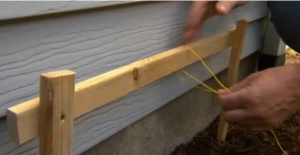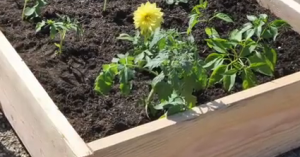Proper care and maintenance of your wood fence should become part of your schedule for property upkeep. Getting in the right habit of doing this will ensure that your fence stays in top condition. Practice good time management skills and strategies, and that will make you much more efficient.
Yes, your brand new wood fence needs a little tender loving care from time to time, and think of it as a responsibility of good maintenance practices between you and your neighbours, and it’s in your best interest to protect your investment. What you have to understand is your fence is part of the overall package. One of the most fundamental practices is an inspection of your fence, but you also have to know what to look for as well. You have to become knowledgeable about maintaining your wood fence, and this article is a perfect way to get off to a great start.
The traditional post and rail fences are left in their natural colour; however, it is up to you about this. Any wood that is outside, and not a tree, is at risk to being degraded by the wind, sun, and rain. You can do some research about this and even correspond with people who are experts with wooden fencing. Do the usual practices with painting and possibly staining which is to use a coating of primer so the outer coating will have something to stick to. Any time you are working with this grade of wood which is usually unfinished, then you definitely do not want to leave it exposed to the outside weather, etc.
 Some aspects of your wood fence need to be given a bit more maintenance than others, and this concerns metal parts and pieces. The best approach here is creating a daily maintenance sheet and doing preventive maintenance if required. In time, dirt and dust will become mixed with the oil you have applied, and this can actually have a reverse effect than what you intended. When you are doing the visual run-down, it is no big deal to look at what is happening with the gate and other areas.
Some aspects of your wood fence need to be given a bit more maintenance than others, and this concerns metal parts and pieces. The best approach here is creating a daily maintenance sheet and doing preventive maintenance if required. In time, dirt and dust will become mixed with the oil you have applied, and this can actually have a reverse effect than what you intended. When you are doing the visual run-down, it is no big deal to look at what is happening with the gate and other areas.
One of the more unusual problems is simply mould, and this will begin to occur after a few months. One very important cleaning tip is to avoid bleach in any form, and if you do use it you will begin to see patches. What will make a good difference is high pressure water, and this can be done with pressure washers. You’ll have even more pressure than a regular hose and this will serve to get more dirt off your fence.
Finally, always be sure to find a good fencer in your local area if professional assistance is required, we’ve recently had help in South Yorkshire from Premier Wooden Fencing in replacing the most damaged fencing panels in a project.
 As you can see from the above video, it’s more than possible to work direct from a grow bag, but a more popular option seems to be
As you can see from the above video, it’s more than possible to work direct from a grow bag, but a more popular option seems to be